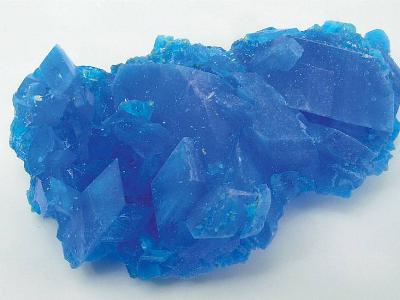EU authorities may lower piglet feed copper content max

Copper sulfate is a mineral used in pig feed. | Iwka, Dreamstime.com
Recommendation is that copper content should not exceed 25 mg/kg.
The European Food Safety Authority (EFSA) has proposed a reduction in the maximum copper content of feed for piglets.
EFSA’s Panel on Additives and Products or Substances used in Animal Feed (FEEDAP) recommends that copper content in complete feed for piglets should not exceed 25 milligrams per kilogram. That’s down from 170 milligrams per kilogram.
The proposed level would reduce the amount of copper released into the environment from pig farms, which could potentially play a role in reducing antimicrobial resistance, the agency stated in a press release.
The FEEDAP panel’s work is based on a literature review and data collected from member states and stakeholders.
The panel estimates that the reduction of copper in feed for piglets would reduce the release of copper into the environment through manure by 20 percent.
In the scientific opinion, EFSA experts also suggest that reducing copper in feed could help to reduce antimicrobial resistance in pigs and in the environment. This is because some studies indicate, as one of several hypotheses, that the occurrence of antimicrobial resistance could potentially be linked to the genetic proximity of some antibiotic and copper-resistance genes.
Copper and antibiotic resistance
Scientists have observed that copper can favor the development of bacteria resistant to certain drugs. Acquired transferable resistance to copper is is linked to the gene tcrB (transferable copper resistance homologous to copB). A study on Danish bacteria suggests that the presence of this gene is directly correlated to the dietary level of copper.
As pig manure can be used as fertilizer, antibiotic-resistance can be spread in soils. A study showed a correlation between antibiotic resistances and copper resistance in microorganisms from soils; for example, occurrence of ampicillin resistance was significantly higher in copper-resistant bacteria than in copper-susceptible bacteria. In addition, frequency of multiples resistances in copper-resistant bacteria is more than twice as high as in copper-susceptible bacteria.
Related news
 Growth in Russian pig meat trade
Growth in Russian pig meat trade For the most recent quarter, Russia increased both imports and exports of pig meat. Russian imports of fresh and frozen pork were significantly higher
 4 global pig meat trade data trends identified
4 global pig meat trade data trends identified Researcher found imbalances among nations’ imports and exports depending on development level.
 Adding copper sulfate to antibiotic-free piglet diets
Adding copper sulfate to antibiotic-free piglet diets Long before the advent of zinc oxide, another mineral used to dominate piglet feeds: copper sulphate. It was known to reduce or prevent piglet diarrheas